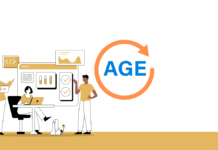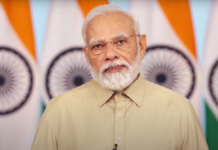On India’s 74th Independence Day, the country witnessed a radical shift in the healthcare system in India. On this occasion, Prime Minister Narendra Modi unveiled the National Digital Health Mission that is based on the National Digital Health Blueprint. The blueprint was prepared by the Ministry of Health and Family Welfare. It was to bring in a framework for National Health Stack which was proposed by NITI Aayog in 2018. The NHS is essentially a document to build a common public good system. It has some of the major advantages as avoidance of duplication of efforts and to bring in all the stakeholders under one umbrella. The stakeholders, in this case, are the government, the service providers, and the citizens.

The mission is an offshoot of The National Health Policy (NHP) 2017 which has the goal of providing the best and the top health and wellbeing for all citizens of all ages through preventive health care initiatives and the promotion of healthcare developmental policies. It aims at ensuring good quality and affordable health care facilities universally. One of the goals of the NHP has been to adopt digital technology. The Ministry of Health and Family Welfare had constituted a committee to implement the objectives of the mission. A National Digital Health Blueprint has been prepared by the committee to implement digital health across the nation.
The National Digital Health Mission has a vision of creating a digital health ecosystem. It will support the coverage of universal health efficiently and affordably. It will deliver the services in a timely and safe manner. It also envisages an open digital information system that is safe and secure.
The objectives of NDHM
The objective is to establish a state-of-the-art health system which will operate digitally. It will contain digital health data of people of all ages and categories. The goal is to make the accessibility and equality of health services strong and accessible. One of its important goals is to create personal health records of citizens maintaining international standards that will be accessible to individuals, healthcare professionals, and pharmacies. The goal is to adopt an open standard by all stakeholders and to create a system of personal health records, based on international standards, easily accessible to individuals and healthcare professionals and services providers, based on an individual’s informed consent.
It is expected that NDHM will improve health service delivery significantly with a lot of efficiency and effectiveness coming into the ecosystem. It will be a leap towards the achievement of the United Nations Sustainable Development Goal of health for all. The mission will provide the support necessary for building integrated digital health infrastructure for the country. It will bridge the gap between various stakeholders in the landscape of the digital highway.
The goal of the mission is to design and develop digital building blocks. These digital building blocks are essential for providing healthcare. The cloud-based technology will be used to make the services available to the public and private players. There will be an application of single-key capability across multiple services. the technology will have simple Application Interfaces.
The vision of the mission is to create a select core digital systems which are constructed to build access to safe and affordable healthcare for all citizens. It’s going to be a drive towards Univeral Health Coverage. The list includes Health ID, DigiDoctor, Health Facility Registry, Health Records, e-Pharmacy, and so on.
The presence of digital infrastructures such as Aadhar, Unified Payments Interface, and wide penetration of mobile phones and the internet provides a strong platform for NDHM. The existing system of digitally identifying people helps to inculcate digital or electronic signature, make paperless payments, the security of digital records provides healthcare information digitally. Under Ayushman Bharat, Pradhan Mantri Jan Arogya Yojana is already providing services through an IT platform that identifies the beneficiaries, their treatment in hospitals, and the paperless payments in the hospitals. The experience of AB-PMJAY can be utilized to expand the reach through digital health to all the people. It will lead to an interoperable health management system to empower citizens.
There is a huge scope for facilitating a wider array of the digital health ecosystem that will enhance access to health services with the use of artificial intelligence, blockchain technology, and cloud computing.
Advantages of Digital Systems
- Health ID will be used to identify people whose health records can be strung together with their consent. It will be done across the spectrum of stakeholders.
- There will be a single repository of all the doctors enrolled across the nation. The repository will contain their names, qualifications, specializations, names of their qualifying institutions, registration numbers, years of experience, etc. These doctors will be assigned a unique digital signature that they can use to prescribe medicines.
- Health Facility Registry is a repository of all health facilities in the country. It will be centrally maintained to store and disperse data in its standardized format for both public and private health facilities. It will be like a created and updated profile for the health facilities.
- A personal health record is an electronic record of all health-related information of an individual. This record will conform to nationally recognized interoperability standards.
Thre are certain key features of the mission that makes it so unique and above suspicion. There were some doubts and confusion in the minds of people regarding the infringement of their privacy in case this mission sees the light of the day. Their suspicions will prove to be unfounded if one goes by the structure and intent of the mission.
- Data is fully owned by the individual and its sharing shall require the consent of the individual.
- There is no compulsion for enrolment
- It’s going to be interoperable. The data will be easily exchanged. The hospitals will be encouraged to be part of the system because there are benefits for them built in the system.
India has a very large healthcare sector. The mission aims to simplify access to healthcare access through the use of digital technology. The provision of Health ID will lead to benefits to the patients as it will help to record the medical history that will lead to early detection and management of an individual’s health. This initiative is going to bring in prevention and wellness. It will lead to a reduction in healthcare costs avoiding duplication of tests and multiple consultations.
National Digital Health Blueprint
The NDHB has details of the blocks that are tailormade for the vision of NHP 2017. It’s an action plan to realize digital health across the nation. There is a 5-layered system of architectural building blocks, UHID, privacy and consent management, EHR, and multiple access channels. These multiple access channels are call centers, India Health Digital Health Portal, and MyHealth App.
India is poised to adopt software systems in healthcare to manage health information. The software is:
- Electronic Medical Records (EMR) – It is used by the hospitals to support patient diagnosis and treatment. The NDHM makes it mandatory for the systems to support standards and provide access to the data to the patients.
- Electronic Health Records (HER) – It’s a record of the patients across multiple physicians and service providers. It is used to provide better healthcare to the patients.
- Personal Health Records (PHR) – It will help patients to keep a copy of their health records. It will help them to better manage their care.
The creation of DigiDoctor and HFR systems will facilitate the creation and use of a consolidated database of healthcare systems and infrastructure. It will help in finding and bridging the gaps in the system.
It is praiseworthy of the government to have come up with an ecosystem that is voluntary and does not infringe on the security and privacy of citizens.









